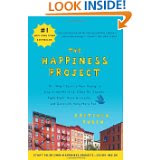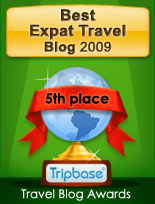
What is the greatest expat book of all time? So far, for me, it has to be "My Life in France" by Julia Child. These days it is easy for expats to get a book in an instant on Kindle. I still love the experience of paper copies though. I bought Julia Child's memoir of a life in France in Little Rock, Arkansas, hand carried it to Istanbul, and then to Provence, to read while when I went to visit my college girlfriend Robin and her family in July.
Last year, I delighted in documenting the pleasures of the Provence in ten different posts about
my visit to Robin's house. This year was as wonderful and we did much the same things. First, there were the market pleasures in Loumartin to experience:
Perfect cherry tomatoes
Beautiful berries
more exquisite
by the small size of their boxes
French rabbits who gave their lives
in service to their country's cuisine
There were also the pleasures of food and conversation at the table. My friend Robin is a wonderful cook who knows how to make her family and guests feel loved by the smell, taste, and look of her exquisite home-cooked food.
Knowing I was coming from Istanbul, where access to pork in daily cuisine is practically non-existent, she indulged my cravings for all things pig while I was there. I think we had eight pork meals in a row!
My first breakfast in Provence.
Scrambled eggs and bacon!
Like manna from heaven.
A leek and bacon tart
Steak, mashed potatos and gravy,
grilled mushrooms and roasted fennel
Roast chicken, potatoes, and carrots.
Notice the French market preference
for keeping almost the entirety
of the chicken's feet on the chicken.
Warm leek and bacon soup
Fresh melon and prosciutto
Fresh berry tart
An English summer pudding
Oh, so delicious!
Serena, Robin and Jim's daughter, was visiting from Australia where she is working on her Masters degree in philosophy. It was so wonderful for me to see and listen to her. I had last seen Serena when she was in eighth grade. I enjoyed hearing her discuss her intellectual interests. Experiencing the children of our friends can be so delightful, don't you agree? It's a chance to appreciate our friend's life work in parenting.
Serena has grown up
to be as fine a cook
as both of her parents
Serena's apricot upside-down cake
inspired by famous food blogger
David Lebovitz
Last year, I had told Robin and Jim about my favorite soup, Russian Cabbage Borscht, out of Mollie Katzen's "Moosewood Cookbook." Neither of them had tried borscht, so I promised to make it this year. I must need new glasses though, because in buying the tomato puree for the soup, I failed to notice two bright red chilies on the French-language label.
My soup may look like it is supposed to look, but borscht is not supposed to burn your tongue with chili heat! Oh well...our memories are always enhanced by the things that go wrong in a humorous way. I hope Robin, Jim, and Serena will give borscht a second chance after my Russian cabbage soup got a cross-cultural Latin American dose of extra heat! It's not supposed to taste like that.
Beet, cabbage, carrot, and potato goodness
Russian Cabbage Borscht
topped with yogurt and dill -
normally, healthy and satisfying comfort food.
I relished reading Julia Child's memoir of cooking and cookbook creation at the exact same time I was experiencing such interesting French food markets and food. Julia's joy in discovering the best in a culture new to her, and personalizing that knowledge with the creation of a cookbook celebrating France's cuisine was such rich reading. Provencal surroundings of French landscape and cuisine and dear friends who celebrated both enhanced my reading pleasure.
It was fascinating to me that Julia Child saw America in the polarized way of red and blue that we know today, even if she didn't use those familiar descriptive terms that were invented long after her book was published. She expressed such wonder in cross-cultural discovery and couldn't understand why her own family did not want to experience that same wonder.
Julia Child hit the sweet spot of publishing with her book when American women were cooking for themselves and wanted to make their meals as gracious and as beautiful as possible. I personally have tried cooking out of her cookbook and always find it too laborious and complicated. That doesn't mean I don't appreciate her achievement though.
I could not help but weep at the end of the memoir, such was Julia Child's fervor for the act of living and discovery and creation. What an incredibly well-lived life. Were she still alive, she would have turned 100 years old this week.

Robin and I traded books, and I started the book she was reading: The Happiness Project by Gretchen Rubin. Author Gretchen Rubin fretted that time was short and she asked herself, "am I focusing on the things that really made me happy?"
The book was an account of one woman's drive to do all the things that could contribute to a net increase in her happiness over the course of the year.
How fun it was to read two books in one week and discuss the ideas in each title with my friend. I haven't read two books in one week in years! In the afternoon, Robin and I would have a late afternoon swim and discuss what we had read. The week was a retreat in every sense of the word.
I love this woman!
Thank you Robin,
for a wonderful week with you and your family.


























 Who links to me?
Who links to me?
